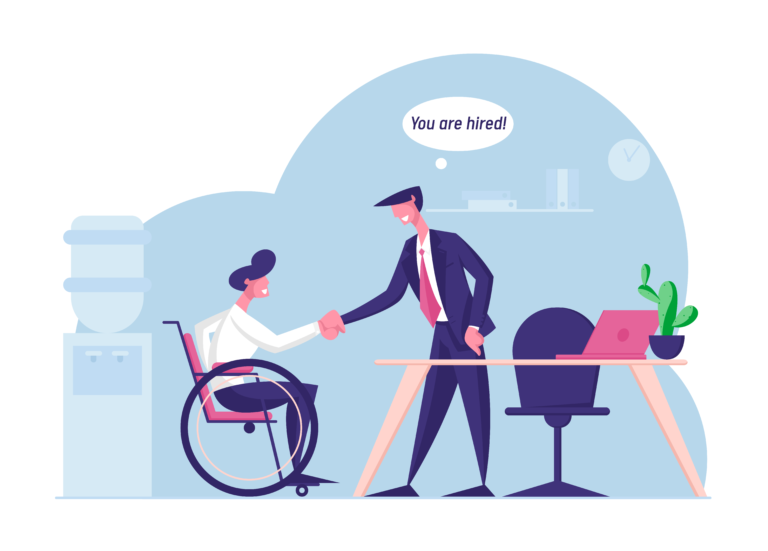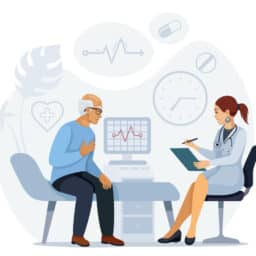Three Approaches for Dealing With OTCs
Most likely, there’s a debate going on in your practice to determine the best way to move forward with OTCs. In fact, in the last year, we’ve seen lots of debates raging in practices across the U.S.
While the entire audiology industry had five years to prepare for OTCs, most of us didn’t consider their impact until they became a legal disruption on October 17, 2022. That’s when we all started thinking about how we would handle the changing tide.
This Ask Fuel First question focuses on OTCs: How did we get to the point where OTCs became mainstream?
Before making any decisions about OTCs, it’s important to understand how we got there. You may wonder how the audiology industry, which has so closely guarded the right to be the sole dispenser of hearing aids, could lose its grip on the monopoly of hearing health care because of a mandated direct-to-consumer sales channel. This Ask Fuel First article gives you a historical overview of events that led up to that impactful change.
In the early days of hearing health care, audiologists and hearing instrument specialists worked collaboratively to provide treatment and care to individuals with various hearing issues. Audiologists would do the testing and diagnosis and then refer patients to a local hearing instrument specialist, who was totally immersed and well-trained in the technology of the time. After the fitting was completed, the hearing instrument specialist referred those patients back to the audiologist for comprehensive aural rehabilitation. This was a formula for success for many years.
Getting Into the Practice of Dispensing
In the 1960s, audiologists got restless and decided that they should participate in dispensing hearing aids. Being a part of that dispensary system meant fitting patients with hearing devices that worked for their medical needs. And some audiologists wanted to contribute to the full spectrum of patient care.
However, it was undoubtedly acknowledged at the time that a large portion of revenue in hearing health care was baked into dispensing hearing aids. It became clear that audiologists were missing out on this revenue, and they wanted to get their own slice of the hearing-aid-dispensing pie.
Although it wasn’t until the late ’70s that audiologists were legally allowed to dispense, many of them provided the entire continuum of care from testing to fitting to aural rehabilitation long before the American Speech-Language-Hearing Association lost their battle against the dispensing audiologist.
Using Early Technology
During that period, understanding the importance of proper aural rehabilitation, including continued support, compensatory strategies, partner training, auditory training and more, was the linchpin for success in a hearing health care treatment plan.
Remember, this was when hearing aids were neither digital nor programmable. And while the technology for the time was quite extraordinary, the hearing aid’s ability to accurately amplify when and where the patient needed it was quite limited.
Audiologists would frequently spend an hour or more orienting the patient to their new device, describing its technology and then leading them through a series of aural rehabilitation appointments to fill gaps created by early technology to help retrain patients’ brains. Aural rehabilitation was also what differentiated one audiologist from another. Audiologists more adept at providing comprehensive patient training were generally more successful.
New Technology Shifted Audiologists’ Focus
It wasn’t until the mid-’90s that things started to get exciting. Advances in technology would initiate lasting change in the audiology industry.
The first digitally programmable hearing aid was released around this time, which meant that audiologists could fine-tune hearing instruments with computers or handheld programmers for the first time ever. It allowed an accuracy never thought possible as programs could be changed decibel by decibel and frequency by frequency.
Let’s face it; the technology started to get pretty cool.
As audiologists and hearing instrument specialists began to focus more on the brilliant technology being released year after year, we started to lose focus on follow-up support. Aural rehabilitation programs were becoming a thing of the past. As audiologists became more and more fixated on what technology could do for patients, they began to limit their counseling discussions. This continued until auditory retraining was practically unheard of by 2005.
More Patients, Less Time
Adding to this wave of technology-focused treatments, the pace of hearing health care started to pick up. With declining reimbursements and significant adjustments to the number of individuals who could perform diagnostics, audiologists didn’t have the luxury of time with patients anymore. And unfortunately, the art of hearing health care based on sound science became more transactional in nature.
The Effect of Consumerism
As technology improved vastly, audiology consultations became largely technology-focused, leading to decreased time spent with patients. This chain of events changed not only hearing health care but the perception of what quality health care was altered as well. Suddenly, the licenses, education and expertise of clinicians and doctors, who provided comprehensive care and technology to so many, became immaterial.
Technology paved the way for consumerism in hearing health care. Patients were buying with a consumer-based mindset and needed to recognize that the technology was only as good as the expert fitting it. Hearing health care was now centered on manufacturer brands instead of the expertise of a person who understood each brand, how to manipulate the software and took the time to fit that technology to each patient’s unique hearing needs.
Hearing health care started to resemble more of a fast-food drive-through than the white tablecloth fine-dining experience it emulated a mere decade or two before.
A Campaign for Access to Hearing Health Care
In the last decade, a campaign was started to improve access to hearing health care. It aimed to reduce or eliminate barriers associated with getting hearing aids.
The assumption was that the most significant barrier to obtaining hearing aids was the expense, which was incorrect. From our experience, we know that the barrier within the hearing health care industry was patients feeling like they didn’t need treatment for hearing loss, nor did they believe hearing devices would help. The No. 1 reason people didn’t proceed with hearing loss treatment was that they didn’t know what they were missing.
This campaign to improve access to hearing health care resulted in the FDA creating a new class of hearing aids that could be purchased entirely over the counter, eliminating the need for a prescription. Without a hearing health care professional to help guide the patient through the process and dispensing of hearing devices, the FDA was able to significantly reduce the cost of these devices.
Present-Day OTC Worries
Fast forward to 2022, when this campaign turned into reality. OTCs became available over the counter at a variety of big-box stores around the U.S. without the need to ever step into an audiologist’s office. We know there will be ramifications for the industry, especially since some practices have already begun losing revenue. But how bad will it get? We don’t know. Instead of focusing on OTCs as a negative, we must adapt and find new ways of differentiating our services, which ironically could come from the past. Read the following article to learn more.


